10. University of Cambridge, England (Founded : 1209 AD)
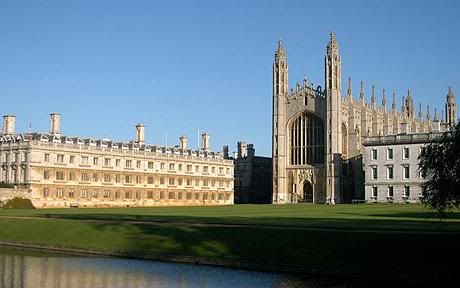 Known as the second-oldest university in the English-speaking world, this university was formed by scholars who left the University of Oxford over a dispute in 1209. The two schools have, therefore, a long history of rivalry between them. Currently, Cambridge is ranked as one of the world’s top five universities and is a premier leading university in Europe. As of 2009, the alumni from this university account for eighty-five Nobel Laureates. Cambridge now consists of 31 colleges comprised of over 150 departments, faculties, schools and other institutions.
9. University of Montpellier, France (Founded : 1150 AD)
Known as the second-oldest university in the English-speaking world, this university was formed by scholars who left the University of Oxford over a dispute in 1209. The two schools have, therefore, a long history of rivalry between them. Currently, Cambridge is ranked as one of the world’s top five universities and is a premier leading university in Europe. As of 2009, the alumni from this university account for eighty-five Nobel Laureates. Cambridge now consists of 31 colleges comprised of over 150 departments, faculties, schools and other institutions.
9. University of Montpellier, France (Founded : 1150 AD)
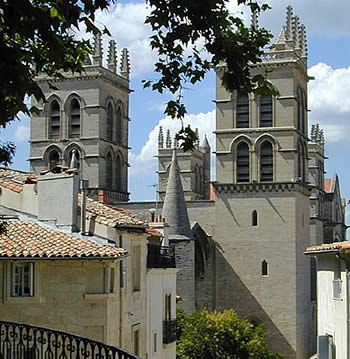 Located in Montpelier, France, this university also is considerably older than its founding date of 1150. A papal bull issued by Pope Nicholas IV in 1289 combined all long-existing schools into one main university. This university was suppressed during the 1793 French Revolution, but the faculties of science and letters were re-established in 1810, law in 1880. This university, in the spirit of modernism, was “re-founded” in 1969. The modern focus is on science and technology.
8. University of Oxford, England (Founded : 1096 AD)
Located in Montpelier, France, this university also is considerably older than its founding date of 1150. A papal bull issued by Pope Nicholas IV in 1289 combined all long-existing schools into one main university. This university was suppressed during the 1793 French Revolution, but the faculties of science and letters were re-established in 1810, law in 1880. This university, in the spirit of modernism, was “re-founded” in 1969. The modern focus is on science and technology.
8. University of Oxford, England (Founded : 1096 AD)
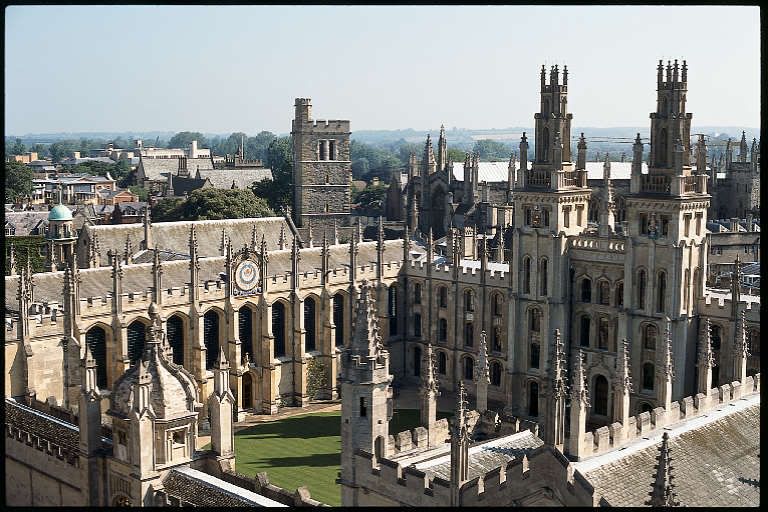 The exact date of this university’s founding is unclear. The formal founding date, however, is 1096 — although teaching from the Oxford location is considerably older than this date. This institute developed rapidly from 1167, when Henry II banned English students from attending the University of Paris. The school has temporarily closed twice, once in 1209 for the town execution of two scholars and in 1355 for the St. Scholastica riot. Currently, this oldest English-speaking university contains 38 colleges, each with its own internal structure and activities.
7. University of Paris, France (Founded : 1090 AD)
The exact date of this university’s founding is unclear. The formal founding date, however, is 1096 — although teaching from the Oxford location is considerably older than this date. This institute developed rapidly from 1167, when Henry II banned English students from attending the University of Paris. The school has temporarily closed twice, once in 1209 for the town execution of two scholars and in 1355 for the St. Scholastica riot. Currently, this oldest English-speaking university contains 38 colleges, each with its own internal structure and activities.
7. University of Paris, France (Founded : 1090 AD)
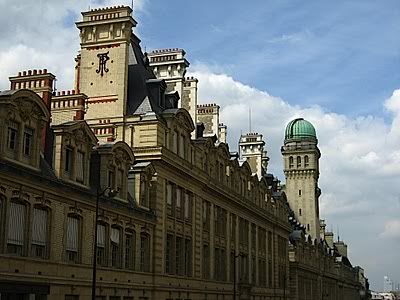 This institution was established in 1090 but abolished in 1789 by the French Revolution. Teaching suspended for two years from 1229 under similar circumstances to Oxford’s later St. Scholasticas riots in 1355. The modern University of Paris was established to continue in the footsteps of the original. In 1890, 101-years after the abolition of the medieval schools, Napoléon’s 1808 academy of the Imperial University received university status in Paris. Following rioting in 1968 by Paris students the new university was again dissolved. Its assets were split into 13 independent institutions by the French government’s 1970 reforms. Several of the 1970′s vintage foundations incorporated the word “Sorbonne” in their name, also acquiring some buildings of older vintage, but these are not the Sorbonne of 1253 – it too was abolished in 1789 by the French Revolution.
6. University of Bologna, Italy (Founded : 1088 AD)
This institution was established in 1090 but abolished in 1789 by the French Revolution. Teaching suspended for two years from 1229 under similar circumstances to Oxford’s later St. Scholasticas riots in 1355. The modern University of Paris was established to continue in the footsteps of the original. In 1890, 101-years after the abolition of the medieval schools, Napoléon’s 1808 academy of the Imperial University received university status in Paris. Following rioting in 1968 by Paris students the new university was again dissolved. Its assets were split into 13 independent institutions by the French government’s 1970 reforms. Several of the 1970′s vintage foundations incorporated the word “Sorbonne” in their name, also acquiring some buildings of older vintage, but these are not the Sorbonne of 1253 – it too was abolished in 1789 by the French Revolution.
6. University of Bologna, Italy (Founded : 1088 AD)
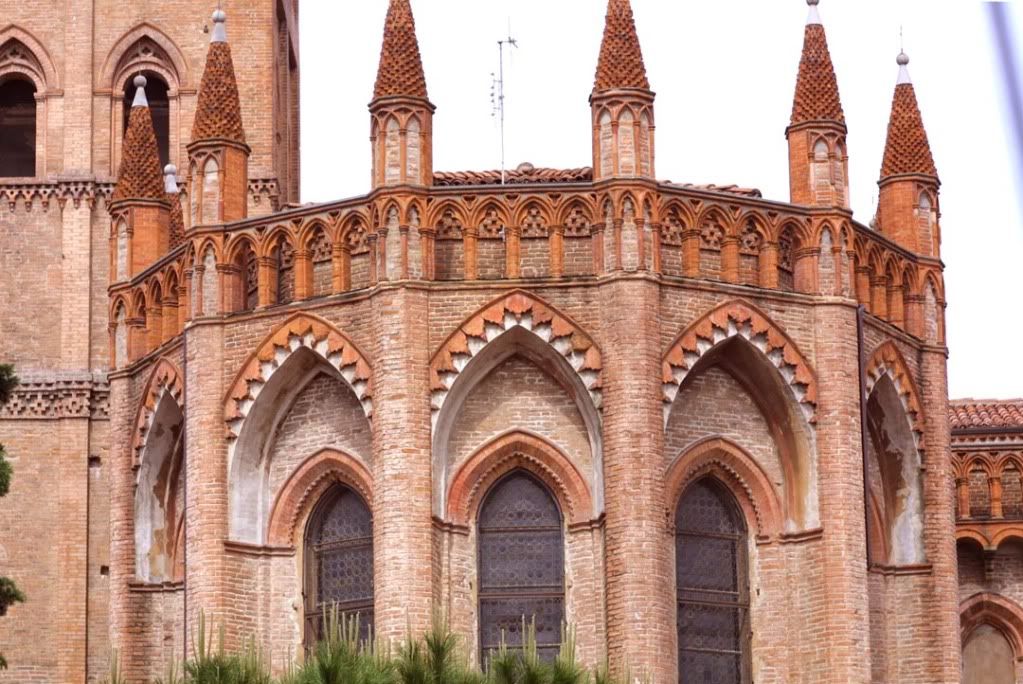 This university was the first higher-learning institute established in the Western world in 1088. The term, “university,” was coined at its creation. Located in Bologna, Italy, this university led the Western world in educational innovations until the period between the two World Wars. At that time, leaders called upon the university to forge relationships with institutions in more advanced countries to modernize and re-invigorate its educational philosophies. This university met the call and, today, is considered a leader in the European university system.
5. Al-Nizamiyya, Iran (Founded : 1065 AD)
This university was the first higher-learning institute established in the Western world in 1088. The term, “university,” was coined at its creation. Located in Bologna, Italy, this university led the Western world in educational innovations until the period between the two World Wars. At that time, leaders called upon the university to forge relationships with institutions in more advanced countries to modernize and re-invigorate its educational philosophies. This university met the call and, today, is considered a leader in the European university system.
5. Al-Nizamiyya, Iran (Founded : 1065 AD)
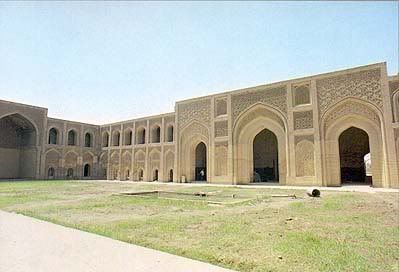 This series of universities was established by Khwaja Nizam al-Mulk in the eleventh century in what is now present-day Iran. The most celebrated of all the Nizamiyya schools is Al-Nizamiyya of Baghdad, established in 1065 in Dhu’l Qa’da and that remains operational in Isfahan. But, this was just one of many Nizamiyyah schools — others were located in Nishapur, Amul, Mosul, Herat, Damascus, and Basra. The Nizamiyya schools served as a model for future universities in the region, and al-Mulk often is seen as responsible for a new era of brilliance which caused his schools to eclipse all other contemporary learning institutions.
4. Al-Azhar University, Egypt (Founded : 972 AD)
This series of universities was established by Khwaja Nizam al-Mulk in the eleventh century in what is now present-day Iran. The most celebrated of all the Nizamiyya schools is Al-Nizamiyya of Baghdad, established in 1065 in Dhu’l Qa’da and that remains operational in Isfahan. But, this was just one of many Nizamiyyah schools — others were located in Nishapur, Amul, Mosul, Herat, Damascus, and Basra. The Nizamiyya schools served as a model for future universities in the region, and al-Mulk often is seen as responsible for a new era of brilliance which caused his schools to eclipse all other contemporary learning institutions.
4. Al-Azhar University, Egypt (Founded : 972 AD)
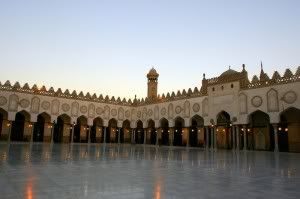 This university, located in Egypt, is the world’s second oldest surviving degree-granting institute. Founded in 970-972, this university serves as a center for Arabic literature and Sunni Islamic learning. Al-Azhar university concentrates upon a religious syllabus, which pays special attention to the Quranic sciences and traditions of the Prophet Muhammad on the one hand, while also teaching all modern fields of science.
3. University of Al Karaouine, Morocco (Founded : 859 AD)
This university, located in Egypt, is the world’s second oldest surviving degree-granting institute. Founded in 970-972, this university serves as a center for Arabic literature and Sunni Islamic learning. Al-Azhar university concentrates upon a religious syllabus, which pays special attention to the Quranic sciences and traditions of the Prophet Muhammad on the one hand, while also teaching all modern fields of science.
3. University of Al Karaouine, Morocco (Founded : 859 AD)
 Located in Fes, Morocco, this university originally was a mosque founded in 859 by Fatima al-Fihri, a woman. It developed into one of the leading universities for natural sciences. It wasn’t until 1957 that the university added mathematics, physics, chemistry and foreign languages. This university is considered the oldest continuously-operating degree-granting university in the world by the Guiness Book of World Records.
2. University of Nanjing, China (Founded : 258 AD)
Located in Fes, Morocco, this university originally was a mosque founded in 859 by Fatima al-Fihri, a woman. It developed into one of the leading universities for natural sciences. It wasn’t until 1957 that the university added mathematics, physics, chemistry and foreign languages. This university is considered the oldest continuously-operating degree-granting university in the world by the Guiness Book of World Records.
2. University of Nanjing, China (Founded : 258 AD)
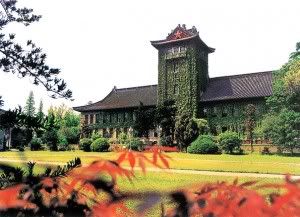 Nanjing is a major commercial center with over six million inhabitants, is located on the lower Yangtze River in eastern China. Nanjing has served as the capital of China during several periods of history, including much of the Ming Dynasty, and has long been a center for learning and the arts. Nanjing University, one of the most prestigious universities in China, was founded in the early 20th century, but traces its lineage back to AD 258. Nanjing University was refounded in 1915 with the name Nanjing Higher Normal Institute on the site of former Nanking Imperial Universitywhich, was originally founded in the first year of Yong’an reign (AD 258) under the Kingdom of Wu by the emperor Sun Xiu, and the first president Wei Zhao.
This was the Kingdom’s central university. In 470 during the Song Dynasty, the Imperial Nanking University became a comprehensive institution combining higher education and research and consisted of five divisions: Literature, History, Confucianism, Dao Study and Yin Yang Study, and it was the first research educational institution in history. In the period the faculty members included such scholars and scientists as Zu Chongzhi, Ge Hong, Wang Xizhi. In the 15th century during the Ming Dynasty, the Imperial Central University in Nanking was the world’s largest higher education institution, with about 10 thousand students, many of whom came from a number of other countries.
1. The University of Nalanda, India (Founded : 500 BC)
Nanjing is a major commercial center with over six million inhabitants, is located on the lower Yangtze River in eastern China. Nanjing has served as the capital of China during several periods of history, including much of the Ming Dynasty, and has long been a center for learning and the arts. Nanjing University, one of the most prestigious universities in China, was founded in the early 20th century, but traces its lineage back to AD 258. Nanjing University was refounded in 1915 with the name Nanjing Higher Normal Institute on the site of former Nanking Imperial Universitywhich, was originally founded in the first year of Yong’an reign (AD 258) under the Kingdom of Wu by the emperor Sun Xiu, and the first president Wei Zhao.
This was the Kingdom’s central university. In 470 during the Song Dynasty, the Imperial Nanking University became a comprehensive institution combining higher education and research and consisted of five divisions: Literature, History, Confucianism, Dao Study and Yin Yang Study, and it was the first research educational institution in history. In the period the faculty members included such scholars and scientists as Zu Chongzhi, Ge Hong, Wang Xizhi. In the 15th century during the Ming Dynasty, the Imperial Central University in Nanking was the world’s largest higher education institution, with about 10 thousand students, many of whom came from a number of other countries.
1. The University of Nalanda, India (Founded : 500 BC)
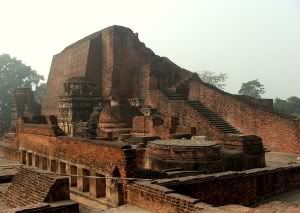 The site of Nalanda is located in the Indian state of Bihar, about 55 miles south east of Patna, and was a Buddhist center of learning from 427 CE to 1197 CE partly under the Pala Empire. It has been called by historians “one of the first great universities in recorded history.”
Nalanda was one of the world’s first residential universities, with dormitories for students. In its heyday it accommodated over 10,000 students and 2,000 teachers. Nalanda had eight separate compounds and ten temples, along with many other meditation halls and classrooms. The library was located in a nine storied building where meticulous copies of texts were produced. The subjects taught at Nalanda University covered all fields of learning, and it attracted pupils and scholars from Korea, Japan, China, Tibet, Indonesia, Persia and Turkey. The Tang Dynasty Chinese pilgrim Xuanzang left detailed accounts of the university in the 7th century.
It is said that The Buddha himself often visited and stayed at the university, which is well known for its Buddhist teachings and knowledge. In 1193, the Nalanda University was sacked by Bakhtiyar Khilji (Muslim Turk leader who invaded, sacked and conquered much of northern India), a milestone in the decline of Buddhism in India. The Persian historian Minhaz, in his chronicle the Tabaquat-I-Nasiri, reported that thousands of monks were burned alive and thousands beheaded, and the burning of the library continued for several months, when “smoke from the burning manuscripts hung for days like a dark pall over the low hills.”
The site of Nalanda is located in the Indian state of Bihar, about 55 miles south east of Patna, and was a Buddhist center of learning from 427 CE to 1197 CE partly under the Pala Empire. It has been called by historians “one of the first great universities in recorded history.”
Nalanda was one of the world’s first residential universities, with dormitories for students. In its heyday it accommodated over 10,000 students and 2,000 teachers. Nalanda had eight separate compounds and ten temples, along with many other meditation halls and classrooms. The library was located in a nine storied building where meticulous copies of texts were produced. The subjects taught at Nalanda University covered all fields of learning, and it attracted pupils and scholars from Korea, Japan, China, Tibet, Indonesia, Persia and Turkey. The Tang Dynasty Chinese pilgrim Xuanzang left detailed accounts of the university in the 7th century.
It is said that The Buddha himself often visited and stayed at the university, which is well known for its Buddhist teachings and knowledge. In 1193, the Nalanda University was sacked by Bakhtiyar Khilji (Muslim Turk leader who invaded, sacked and conquered much of northern India), a milestone in the decline of Buddhism in India. The Persian historian Minhaz, in his chronicle the Tabaquat-I-Nasiri, reported that thousands of monks were burned alive and thousands beheaded, and the burning of the library continued for several months, when “smoke from the burning manuscripts hung for days like a dark pall over the low hills.”
10. Yonaguni-Jima (Japan)
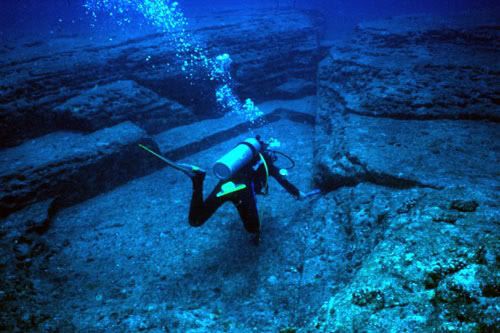 What's not in doubt is that the Yonaguni Monument is quite spectacular, consisting of a geometric terraced structure 27 metres high with vertical walls, as well as a number of other structures resembling trenches, paths, platforms and megaliths. These could well be geological formations similar to the geometric, smooth shapes of Giant's Causeway in Northern Ireland. If on the other hand the site was man-made (or at least man-enhanced), it could, controversially, suggest that people were living on Yonaguni 10,000 years ago.
9. Mahabalipuram (India)
What's not in doubt is that the Yonaguni Monument is quite spectacular, consisting of a geometric terraced structure 27 metres high with vertical walls, as well as a number of other structures resembling trenches, paths, platforms and megaliths. These could well be geological formations similar to the geometric, smooth shapes of Giant's Causeway in Northern Ireland. If on the other hand the site was man-made (or at least man-enhanced), it could, controversially, suggest that people were living on Yonaguni 10,000 years ago.
9. Mahabalipuram (India)
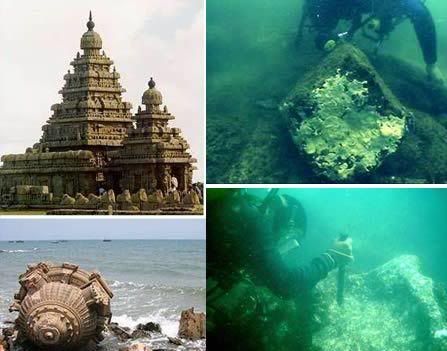 Mahabalipuram in India's Tamil Nadu province is a UNESCO World Heritage site even though part of the city is thought to be under water.
During the Indian Ocean tsunami of 2004 large sandbanks were washed away from Mahabalipuram's beach, uncovering walls, statues of lions, elephants, horses and deities, and temples from the Pallava period of the seventh to ninth centuries AD.
Eighteenth century travellers to the area wrote about seven temples that were on Mahabalipuram's shoreline. These structures could now be submerged and an archaeological investigation is being carried out by the Archaeological Survey of India.
At its height, Mahabalipuram was a city ruled by the Pallava dynasty, which rose to power during the sixth and seventh centuries. It was renowned for its architecture and carvings, which can still be seen in the city's surviving ancient temples.
8. Dolichiste and Simena (Turkey)
Mahabalipuram in India's Tamil Nadu province is a UNESCO World Heritage site even though part of the city is thought to be under water.
During the Indian Ocean tsunami of 2004 large sandbanks were washed away from Mahabalipuram's beach, uncovering walls, statues of lions, elephants, horses and deities, and temples from the Pallava period of the seventh to ninth centuries AD.
Eighteenth century travellers to the area wrote about seven temples that were on Mahabalipuram's shoreline. These structures could now be submerged and an archaeological investigation is being carried out by the Archaeological Survey of India.
At its height, Mahabalipuram was a city ruled by the Pallava dynasty, which rose to power during the sixth and seventh centuries. It was renowned for its architecture and carvings, which can still be seen in the city's surviving ancient temples.
8. Dolichiste and Simena (Turkey)
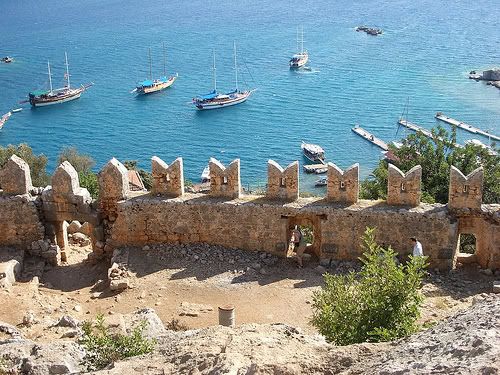 Kekova is an island about half a kilometre off the southern coast of Turkey, south-west of Antalya. It was the site of the ancient cities of Dolichiste and Simena, which were part of ancient Lycia – but little is left of the cities except for submerged ruins off the island's coast.
Lycia was a region of Anatolia and established a Lycian League of ancient cities in 168 BC, with its capital at Patara. The Romans under Claudius annexed Lycia to the empire in around 43 AD. The cities of Simena and Dolichiste are mentioned by Ptolemy and Pliny and date back to the fourth century BC.
They were destroyed by an earthquake in the second century AD, which submerged the land they were built on, plummeting them into the sea. At Simena, fountains, staircases and houses, as well as the ancient port, are all visible under water. Part of ancient Simena was also on the main land and this part has a small ancient amphitheatre, baths dedicated to the emperor Titus and the remains of numerous ancient sarcophagi.
7. Dunwich (United Kingdom)
Kekova is an island about half a kilometre off the southern coast of Turkey, south-west of Antalya. It was the site of the ancient cities of Dolichiste and Simena, which were part of ancient Lycia – but little is left of the cities except for submerged ruins off the island's coast.
Lycia was a region of Anatolia and established a Lycian League of ancient cities in 168 BC, with its capital at Patara. The Romans under Claudius annexed Lycia to the empire in around 43 AD. The cities of Simena and Dolichiste are mentioned by Ptolemy and Pliny and date back to the fourth century BC.
They were destroyed by an earthquake in the second century AD, which submerged the land they were built on, plummeting them into the sea. At Simena, fountains, staircases and houses, as well as the ancient port, are all visible under water. Part of ancient Simena was also on the main land and this part has a small ancient amphitheatre, baths dedicated to the emperor Titus and the remains of numerous ancient sarcophagi.
7. Dunwich (United Kingdom)
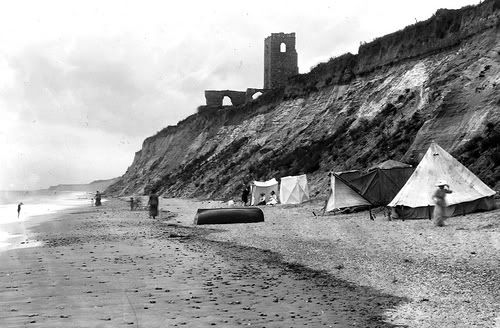
Until the the 15th century Dunwich, on the coast of East-Anglia in England, was a thriving city, a centre for Medieval trade that rivalled even London in terms of its prosperity at that time. But the city was cut off in its prime by coastal erosion and surging tides. Most of Dunwich is now no more than a ruin on the sea bed.
Four hundred houses were destroyed by the storms of 1328 and 1348, along with priories, churches and a windmill.
While archaeologists are unsure of the whereabouts of all these structures, a project is under way to map the coastal area with acoustic imaging technology.
6. Atlit-Yam (Israel)

It wasn't just cities from the classical Greek and Roman periods that were consumed by the Mediterranean - Neolithic settlements have also been found on the sea bed. Off the Carmel coast in Israel, about 15km south of Haifa, between 200-400m out to sea and at a depth of up to 12m, are the remains of a settlement that is about 8,000 years old. Atlit-Yam covers an area of about 40,000 square metres and includes seven stone megaliths at a ritual site (six of them still upright), stone water wells, stone walls, foundations for rectangular buildings, paved areas and burials sites. Sixty-five human skeletons have been found at the site (according to the Israel Antiquities Authority) - some of which showed signs of inner-ear disease caused by diving in cold water. Animal remains at the site include many types of fish bones, wild animals and some, such as cattle, which were semi-domesticated.
Atlit-Yam is the earliest known site on the Levantine coast that shows a society based on agriculture, domesticated animals and marine hunting. It would have been a complex economy, using diverse resources for survival. This would have come to an end somehow – who knows how or when – when sea levels rose and left Atlit-Yam many metres below the surface. Nearby are five other submerged Neolithic settlements from the Wadi Rabah culture.
5. Caesarea Maritima (Israel)
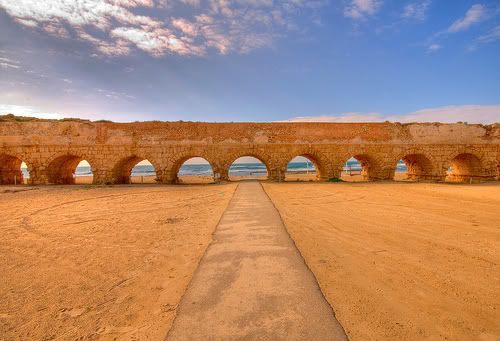 Caesarea Maritima (renamed Caesarea Palaestina in 133 AD) was a city and port built by Herod the Great during 25-13 BC. Herod used complex building techniques and hydraulic concrete to build a massive harbour for his city jutting out into the sea.
It was a bold construction that made an impressive entrance to the Roman city in the eastern Mediterranean – it was the largest artificial harbour built in the open sea at the time it was built during the first century.
But as with many superlative man-made structures (eg., the Titanic, the Channel Tunnel), Herod's moles soon ran into problems. They had been built so quickly that some of the concrete used inside them hadn't been properly mixed and this weakened the arms of the harbour. There was a tsunami during the first and second centuries AD and furthermore the harbour lay on a seismic fault line, which would have caused subsidence. The harbour had subsided and was abandoned by the sixth century AD.
In 2006 an underwater museum opened in Caesarea Maritima offering snorkelling and scuba diving tours of Herod's harbour.
4. Pavlopetri (Greece)
Caesarea Maritima (renamed Caesarea Palaestina in 133 AD) was a city and port built by Herod the Great during 25-13 BC. Herod used complex building techniques and hydraulic concrete to build a massive harbour for his city jutting out into the sea.
It was a bold construction that made an impressive entrance to the Roman city in the eastern Mediterranean – it was the largest artificial harbour built in the open sea at the time it was built during the first century.
But as with many superlative man-made structures (eg., the Titanic, the Channel Tunnel), Herod's moles soon ran into problems. They had been built so quickly that some of the concrete used inside them hadn't been properly mixed and this weakened the arms of the harbour. There was a tsunami during the first and second centuries AD and furthermore the harbour lay on a seismic fault line, which would have caused subsidence. The harbour had subsided and was abandoned by the sixth century AD.
In 2006 an underwater museum opened in Caesarea Maritima offering snorkelling and scuba diving tours of Herod's harbour.
4. Pavlopetri (Greece)
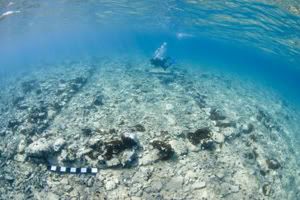
The Mycenaean town of Pavlopetri, off the southern coast of Greece near the modern town of Neapolis, is several metres under water.
Although the Mycenaean period dated from 1600-1100 BC, Pavlopetri dates back to the Neolithic period according to ceramics that have been found at the site, making it the oldest known submerged town. Pavlopetri was an important trading hub in the eastern Mediterranean until it became submerged abruptly around 1000 BC.
3. Dian Kingdom (China)
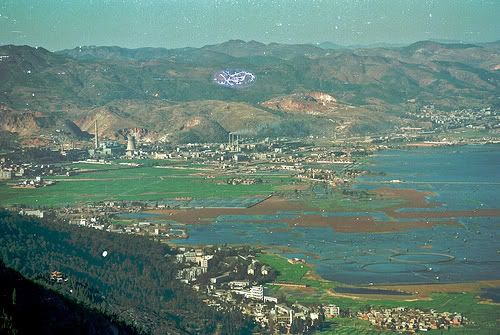
The Dian people lived in China's Yunnan province between the fifth century BC and the first century AD. They lived around Dian Lake (or Kunming Lake), at an altitude of almost 2km above sea level.
The Dian were accomplished artisans and produced bronze vessels and sculptures, which typically depicted scenes of hunting, dancing and other every-day activities and included wild animals such as tigers and oxen. Their territory included Lake Fuxian, partially in Yunnan province, where ancient ruins have been discovered beneath the surface.
It has been suggested these could be the remains of the capital city of the Dian people, which was destroyed by an earthquake and flood that killed all of the city's inhabitants in 110 AD.
2. Baiae and Portus Julius (Italy)
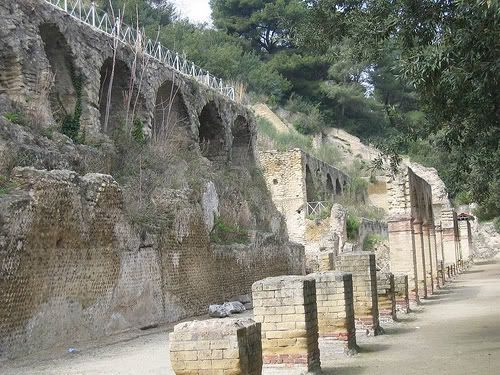
Baiae was one of the ancient Roman towns that overlooked the Bay of Naples. Once the seaside playground of rich Romans (an ancient St Tropez), many emperors spent time at their villas there.
Baiae was connected to one of the Roman empire's biggest naval bases, Portus Julius, built in 37-36 BC and home to the Classis Misenensis, Rome's formidable fleet.
Portus Julius and Baiae were built on a tract of volcanic land that was given to seismic movements, known as the Phlegraean Fields.
With time the volcanic activity meant that part of the land subsided, with the result that Roman villas, much of the structure of the port and other structures are now only visible to scuba divers or visitors on a glass-bottomed boat.
1. Heracleion and Cleopatra's Palace, Alexandria (Egypt)
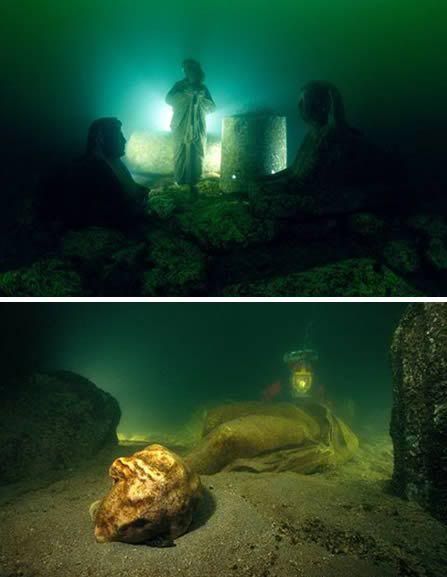
Perhaps the most grand and famous of all drowned cities, Heracleion was the port city of Alexandria, Egypt. It was the port of pharoahs and emperors dating back to the 12th century BC, while the living quarters of Cleopatra have been discovered nearby.
Heracleion was named after Hercules, who is believed to have visited the city along with Helen of Troy. But in the eighth century disaster struck and Heracleion was hit by earthquakes and floods, which destroyed the city, submerging it – along with Cleopatra's Palace – in the Mediterranean. In 2000 the site was re-discovered by a team of French underwater archaeologists, who have since found hieroglyphic tablets of stone, gold jewellery, amulets, coins and plates. The temple of Amun has been discovered as well as colossal statues dating from the late pharaonic period. A team led by French underwater archaeologist Franck Goddio has also found the site believed to be Cleopatra's palace, which was abandoned soon after her suicide in 31 BC.



















